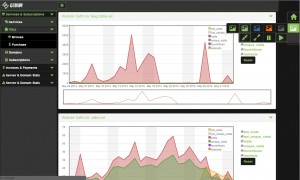Spam is always a concern when you have email. We have successfully integrated DKIM signing to our email system. As it can break mail delivery this is not done automatically. DNS records need to be in place for it to work properly. Thus if you’re hosted at CLDMV please contact us in order to help you with the process of setting up DKIM.
Next upgrade we have put in place is our own custom mail filter. Right now there isn’t much to it but injecting a header into emails to show it working. But soon there will be SMTP Relay limits (used to prevent compromised emails from flooding emails outbound), Custom spam filtering though DB rules, and probably some other things which I’m not thinking of currently.
The two main issues we had with putting our own Filter in place was the ability to maintain our Anti-Virus and Spam systems that were already in place while also being able to provide a second content filter. After many hours and tons of caffeine we were able to produce a system which kept our current system intact while adding the secondary system on top of it. As always Security in this manner was a great concern. Especially considering we would be handling external content. Several limitations are at play in current mail systems which caused us to create innovate techniques in order to send emails to our own system securely. We even attempted to hack our own mail server through emails and were unsuccessful.


